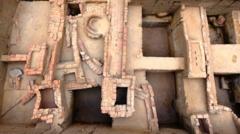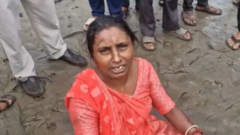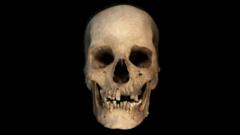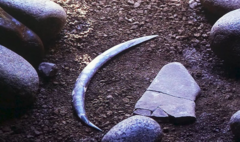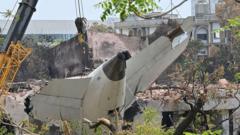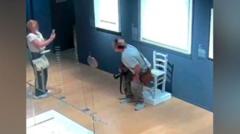After a six-year hiatus in a makeshift shelter, a 1,000-year-old skeleton from the Solanki period has been moved to the Archaeological Experiential Museum in Vadnagar, Gujarat, where it awaits public exhibition.
Ancient Skeleton from Solanki Period Finds New Home in Vadnagar Museum
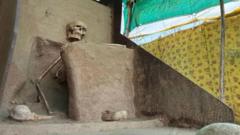
Ancient Skeleton from Solanki Period Finds New Home in Vadnagar Museum
A long-lost skeleton, buried in a cross-legged position, is now displayed six years post-excavation in Gujarat, India.
The recent transportation of the ancient skeleton, discovered in western Gujarat, marks a significant step in its preservation and public presentation after prolonged bureaucratic delays. The skeletal remains, found in a seated posture, had been left unprotected since their excavation in 2019, leading to concerns regarding their conservation.
On Thursday, museum curator Mahendra Surela confirmed that the skeleton was moved with the utmost care and supervision from experts, as officials of the Archaeological Survey of India (ASI) have expressed intentions to analyze the remains further. Once assessments are complete, the skeleton is anticipated to be prominently displayed, potentially on the upper floor where a photo of it is currently showcased.
This remarkable find has drawn attention from archaeologists, including Abhijit Ambekar, who unearthed the remains and described them as exceptionally rare, with similar skeletons previously found only at three other sites across India. Ambekar noted that the skeleton is a key to understanding "samadhi burials," a traditional Hindu practice involving the burial of revered figures.
Despite the skeleton's historical significance, its initial years post-discovery were fraught with mismanagement, as it languished under a tarpaulin without adequate protection from natural elements. Archaeological experts suggest that the preservation was aided by the undisturbed soil surrounding the remains, traced back to the Solanki dynasty, which flourished between 940 and 1300 CE.
As the skeleton embarks on its journey into public consciousness, it promises not just insights into ancient burial practices but also a reflection on contemporary attitudes toward archaeological stewardship in India.
On Thursday, museum curator Mahendra Surela confirmed that the skeleton was moved with the utmost care and supervision from experts, as officials of the Archaeological Survey of India (ASI) have expressed intentions to analyze the remains further. Once assessments are complete, the skeleton is anticipated to be prominently displayed, potentially on the upper floor where a photo of it is currently showcased.
This remarkable find has drawn attention from archaeologists, including Abhijit Ambekar, who unearthed the remains and described them as exceptionally rare, with similar skeletons previously found only at three other sites across India. Ambekar noted that the skeleton is a key to understanding "samadhi burials," a traditional Hindu practice involving the burial of revered figures.
Despite the skeleton's historical significance, its initial years post-discovery were fraught with mismanagement, as it languished under a tarpaulin without adequate protection from natural elements. Archaeological experts suggest that the preservation was aided by the undisturbed soil surrounding the remains, traced back to the Solanki dynasty, which flourished between 940 and 1300 CE.
As the skeleton embarks on its journey into public consciousness, it promises not just insights into ancient burial practices but also a reflection on contemporary attitudes toward archaeological stewardship in India.

